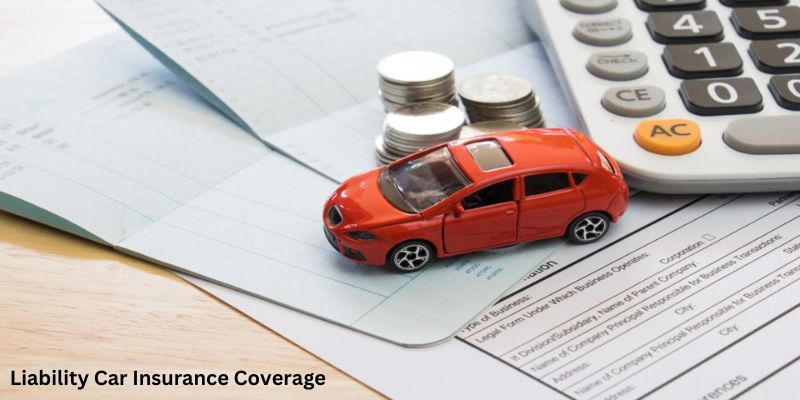Vehicle insurance coverage is a must-have for every driver. It protects you financially in case of accidents, theft, or other losses. However, choosing the right car insurance coverage can be overwhelming with so many different options available. In this article, carism.info will explore the 10 best car insurance coverage options and provide tips on how to select the right coverage for you.
I. Liability Car Insurance Coverage

Most states have laws requiring liability insurance. It offers defense against any harm or loss you might cause to someone else in an accident. Bodily injury liability and property damage liability are the two sections that commonly make up liability coverage.
Bodily injury liability covers medical expenses, lost wages, and pain and suffering for others in an accident you cause. Property damage liability covers the cost of repairing or replacing other vehicles or property damaged in an accident you cause.
State minimum liability limits are typically quite low, so it’s important to consider increasing your liability limits beyond the minimum required by law to ensure you’re fully protected. Higher limits may also protect your assets if you’re sued for damages exceeding your insurance limits.
II. Collision Car Insurance Coverage
Collision coverage protects your vehicle against damage resulting from a collision with another vehicle or object, such as a fence or tree. This coverage is not required by law, but it is often recommended for newer or higher-value vehicles. Collision coverage typically has a deductible, which is the amount you pay out of pocket before insurance kicks in.
A higher deductible can lower your premium but means you’ll have to pay more out of pocket in case of an accident. Consider your deductible when selecting collision coverage and determine if you can afford the out-of-pocket expenses.
III. Comprehensive Car Insurance Coverage

Comprehensive coverage provides protection against damage to your vehicle from events such as theft, vandalism, or natural disasters. This coverage is often required for financed or leased vehicles and is recommended for higher-value vehicles. The amount you have to pay out of pocket before insurance begins to pay is known as the deductible for comprehensive coverage.
Again, a higher deductible can lower your premium but means you’ll have to pay more out of pocket in case of an accident. Ensure you have sufficient comprehensive coverage to protect your vehicle’s full value.
IV. Personal Injury Protection Car Insurance Coverage
Personal injury protection (PIP) coverage provides medical expense coverage for you and your passengers in case of an accident, regardless of who was at fault. PIP coverage is required in some states and is an optional coverage in others. PIP coverage can provide additional protection against expensive medical bills and lost wages.
PIP coverage typically has a limit, which is the maximum amount your insurance company will pay for medical expenses.
V. Uninsured/Underinsured Motorist Car Insurance Coverage
Uninsured/underinsured motorist (UM/UIM) coverage provides protection against damages caused by drivers without insurance or insufficient insurance coverage. This coverage is important to protect yourself from financial losses caused by other drivers.
UM/UIM coverage typically has a limit, which is the maximum amount your insurance company will pay for damages caused by uninsured or underinsured drivers. Consider adding UM/UIM coverage to your policy to ensure you’re protected against uninsured drivers.
VI. Additional Car Insurance Coverage Options
Many additional car insurance coverage options are available.
- Roadside Assistance: Provides towing and other emergency services in case of a breakdown.
- Rental Car Coverage: Covers the cost of a rental car while your vehicle is being repaired after an accident.
- Gap Insurance: Covers the difference between what you owe on your car and its actual cash value in case of a total loss.
These options can provide additional protection against unexpected events and expenses
VII. Selecting the Right Car Insurance Coverage

Selecting the right car insurance coverage can be overwhelming, but following these tips can help:
- Assess your needs: Consider your vehicle’s value, your driving habits, and your financial situation to determine the coverage you need.
- Compare coverage options: Research different car insurance companies and compare coverage options and costs. Think about the insurance company’s standing and financial security.
- Consider discounts: Many car insurance companies offer discounts for safe driving, multiple vehicles, good grades, and more. Inquire about any discounts you could qualify for.
- Review your policy annually: Your insurance needs may change over time, so it’s important to review your policy annually and make changes as necessary.
- Work with an agent: An experienced car insurance agent can help you navigate the different coverage options and select the right coverage for you.
VIII. Conclusion
Choosing the right car insurance coverage is essential for any driver. By understanding the different types of auto insurance coverages and considering your personal needs and driving habits, you can select the coverage that best suits you. The 10 best car insurance coverage options we’ve discussed provide a good starting point for your research.
Remember to carefully evaluate your options, compare costs and coverage, and work with an experienced agent to make the best decision for you and your vehicle. With the right car insurance coverage, you can drive with confidence and peace of mind knowing that you are fully protected on the road.